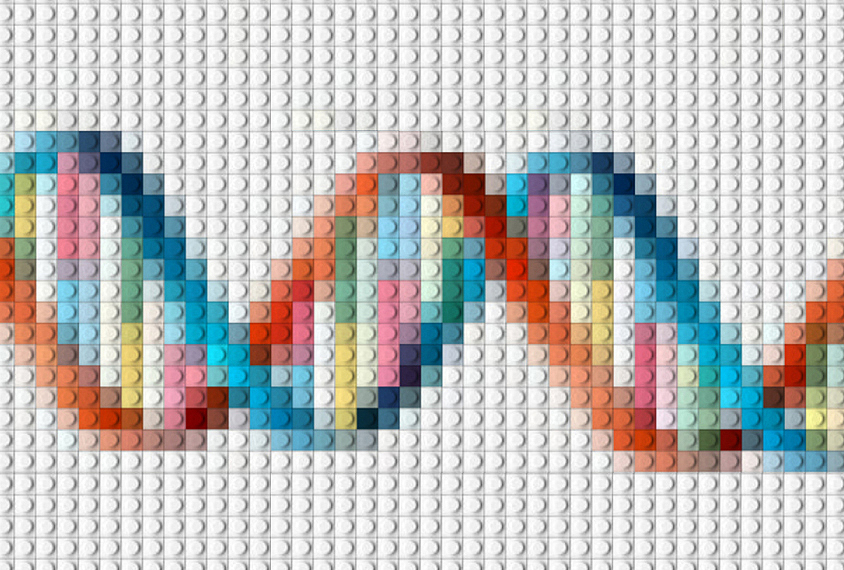
William Keckler
Sizeable fraction of autism risk traced to ‘mosaic’ mutations
Mutations that appear in only some of the body’s cells contribute to autism in about 4 percent of people with the condition.
Mutations that appear in only some of the body’s cells contribute to autism in about 4 percent of people with the condition, an analysis of more than 8,000 sequences suggests1.
Mosaic mutations arise spontaneously after conception; the later they appear, the fewer cells of the body they affect.
The findings suggest that these so-called ‘mosaic mutations’ play a bigger role in autism than previously thought. “This number places mosaic mutations as a whole as having a similar contribution [to autism risk] as other classes of de novo mutations,” says lead investigator Brian O’Roak, assistant professor of molecular and medical genetics at Oregon Health & Science University in Portland.
A large study published in July found that 7.5 percent of de novo, or spontaneous, mutations in people with autism occur in a mosaic pattern. The new study found that about 22 percent of de novo mutations are mosaic. The results were published 31 August in the American Journal of Human Genetics.
O’Roak’s team unearthed another surprise: About 7 percent of spontaneous mutations in people with autism are present in some of their parents’ blood cells.
“That’s important in terms of genetic counseling,” says Anne Goriely, associate professor of human genetics at the University of Oxford in the United Kingdom, who was not involved in the study. Clinicians usually assume that a de novo mutation in a child is a one-off event. “But if you can pick it up at a low level in the blood of one of the parents, then you know the risk [of recurrence] is much higher.”
Sequence scans:
O’Roak’s team looked for mosaic mutations in 2,506 families that have one child with autism and unaffected parents and siblings. Previous studies revealed a total of 2,996 mutations in the participants with autism and 2,080 in their siblings that do not show up in their parents.
The researchers looked at each mutation’s ‘allele fraction,’ a number based on the proportion of an individual’s cells that contain the mutation. A de novo mutation that arises in an egg or sperm shows up in all of a child’s cells but affects only one of the two DNA copies, or alleles, yielding an allele fraction of about 50 percent. A mosaic mutation affects fewer cells, so its allele fraction is smaller.
Roughly 11 percent of the de novo mutations in people with autism, and 10 percent of those in their siblings, have an allele fraction of 35 percent or less, the researchers found. They predict that these mutations are likely to be mosaic, and the rest originated in a parent’s egg or sperm.
The researchers sequenced many copies of DNA at the sites of germline and mosaic mutations in 24 of the families for more precise estimates of these mutations’ allele fractions. They found that their previous predictions were accurate for 701 of the 965 mutations.
O’Roak’s team then identified features that distinguish germline mutations from mosaic ones, and developed a computational method to spot mosaic mutations. They refined their method with 400 additional families until it identified 95 percent of the mosaic mutations.
The researchers then applied the method to 2,264 of the families. They found 2,147 de novo mutations, 470 of which are mosaic, in the people with autism and their siblings. Mosaic mutations occur at about the same frequency in people with autism as they do in their unaffected siblings, the analysis found.
Pieced together:
People with autism have twice as many mosaic mutations that are ‘synonymous,’ meaning they do not change a protein’s amino acid sequence, as their siblings do, however. These mutations are also more likely than those in siblings to land close to ‘splice’ sites — regions that control how genes are pieced together — and to disrupt these sites.
Another mutation type, called ‘missense,’ occurs at roughly the same frequency in people with autism as in their siblings. But mosaic missense mutations in people with autism are more likely to occur in genes that are rarely mutated in the general population. They are also more likely to land in genes strongly linked to autism, including SCN2A, SYNGAP1, CHD2 and CTNNB1.
By comparing the rates of synonymous and missense mosaic mutations in people with autism and their siblings, the researchers estimate that the mutations contribute to 4 percent of autism cases.
“We’re starting to get an estimate of another source of contribution to [autism risk], one that might have slipped through our filters and ability to detect with older technology a few years ago,” says Michael Ronemus, research assistant professor at Cold Spring Harbor Laboratory in New York. (Ronemus has collaborated with O’Roak but was not involved in the new study.)
The researchers also looked for mosaic mutations in the parents’ DNA. They found that up to 11 percent of mosaic mutations in parents also appear in their children. Parents’ mosaic mutations account for 6.8 percent of mutations presumed to be de novo in their children.
Studies that compare sequences in different body tissues may reveal additional mosaic mutations, Goriely says.
O’Roak says his team is doing just that, comparing mosaic mutations in blood and brain tissue (collected from epilepsy surgeries) in people with autism. The team is also comparing mutations in blood and saliva from identical twins in which only one twin has autism, to determine whether mosaic mutations contribute to their discordant diagnoses.
References:
- Krupp D.R. et al. Am. J. Hum. Genet. Epub ahead of print (2017) PubMed
Recommended reading

Developmental delay patterns differ with diagnosis; and more

Split gene therapy delivers promise in mice modeling Dravet syndrome

Changes in autism scores across childhood differ between girls and boys
Explore more from The Transmitter

Smell studies often use unnaturally high odor concentrations, analysis reveals

‘Natural Neuroscience: Toward a Systems Neuroscience of Natural Behaviors,’ an excerpt
